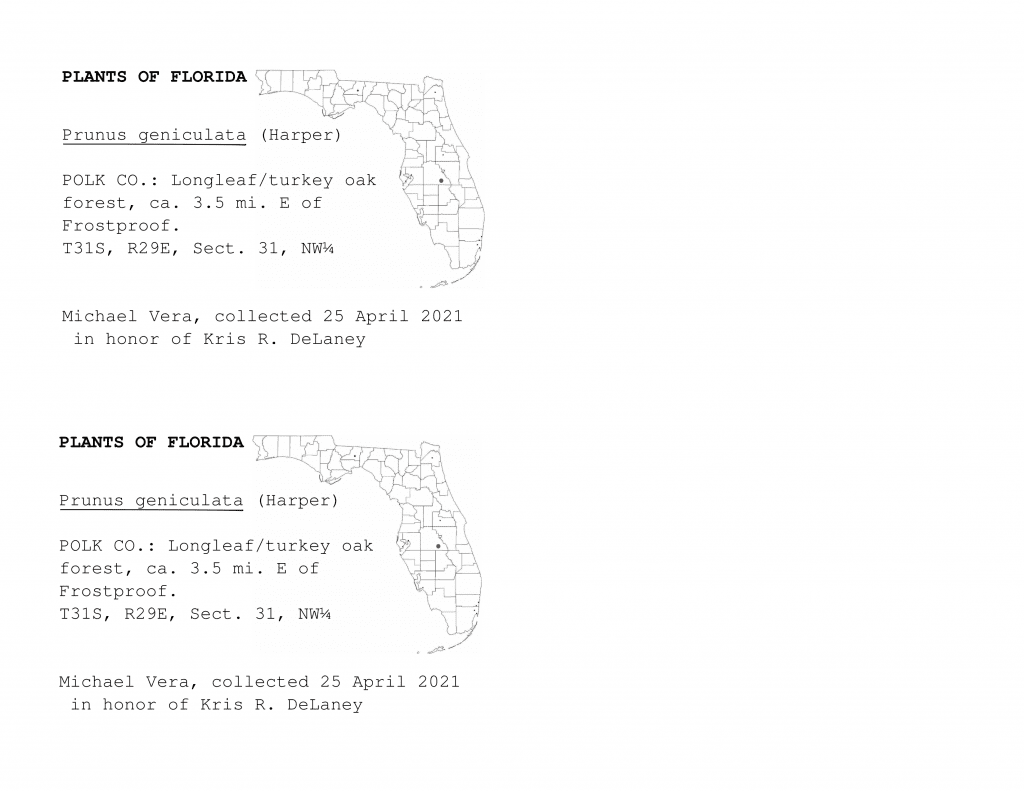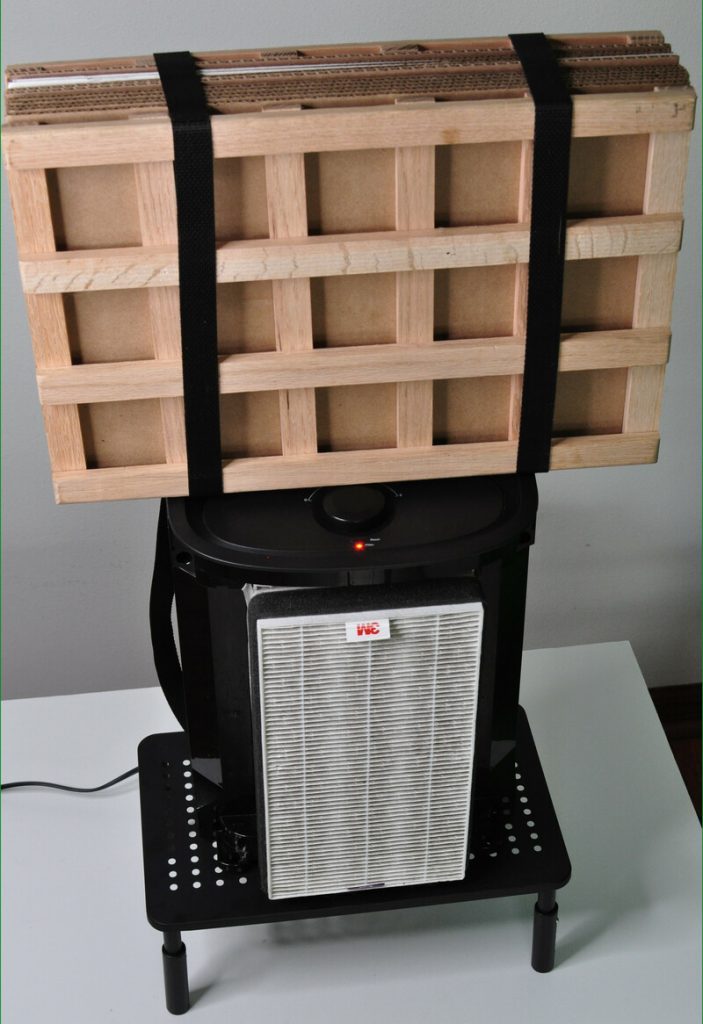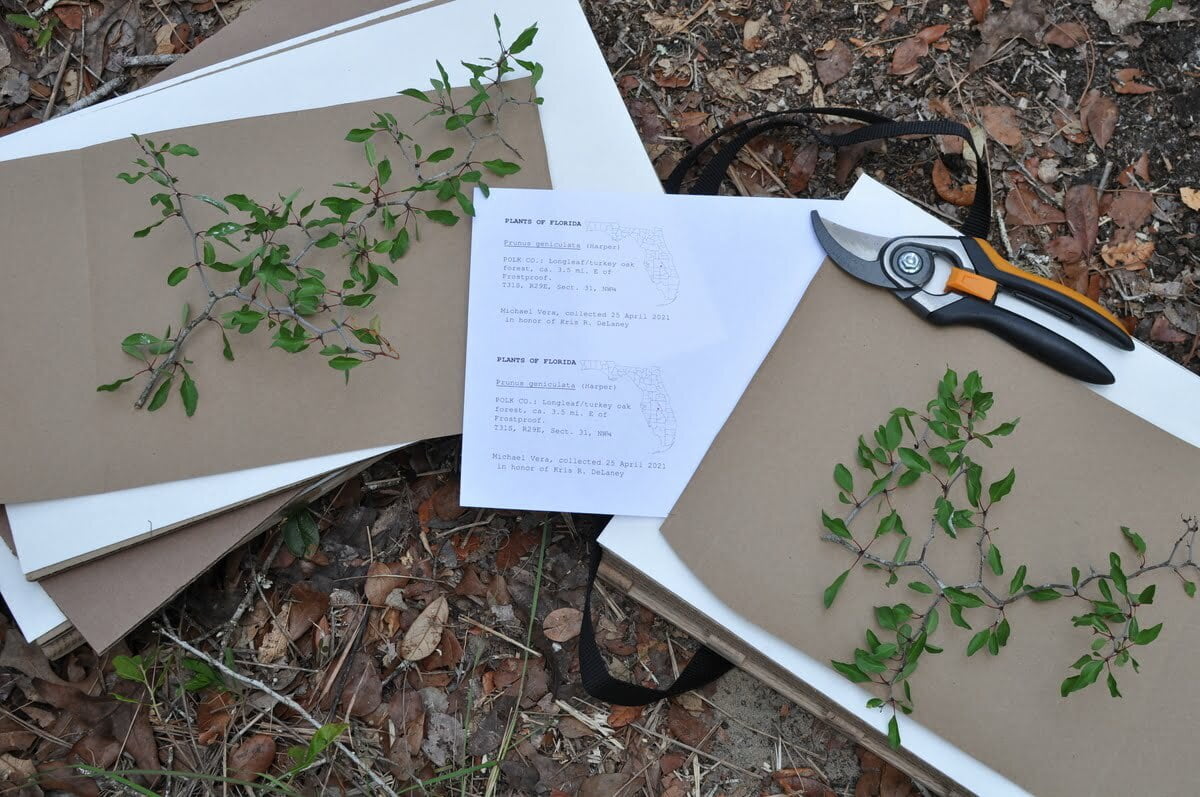Submitting the first herbarium specimens of Scrub Plum (prunus geniculata) to the University of South Florida Herbarium (USF) from Polk County to in nearly 34 years, Johnny Butterflyseed has shipped his two specimens today. One specimen was shipped to USF, and the other to the University of Florida Herbarium (FLAS). Shipping was arranged for next-day arrival of the specimens to the herbaria.
The last USF Scrub Plum herbarium specimen on record for Polk County was collected by Bruce Hansen, R. P. Wunderlin, and Kris R. DeLaney on August 5th, 1987, in an “open canopied low forest dominated by Carya floridana and scrub oaks such as Quercus laevis” and was “associated with ziziphus celata”.

DeLaney’s last Scrub Plum specimen, found in the Atlas of Florida Plants at USF, was collected in Highlands County on April 25th, 1988.

Along with Scrub Plum, DeLaney has submitted thousands of specimens to the herbarium that can help anyone see and identify all of Florida’s known plants. DeLaney, also known as The Botanical Explorer, or simply “BotX,” has published several, excellent articles about some of the most unique Florida plants, available at http://www.botanicalexplorer.com/current.html
Previously to Hansen, Wunderlin, and DeLaney’s Scrub Plum specimens of the 1980s, J. D. Ray, Jr. submitted a Scrub Plum specimen from Highlands County, also on April 25th, but in the year 1960.

Scrub Plum Day
As a result, Johnny decided April 25th should be the official Scrub Plum Day. He has also declared April 25th as his personal Scrub Plum Inventory Day, where his entire population of Scrub Plum have their mottes, ramets, and geniculates poked, prodded, and measured, and their overall health assessed.
Johnny thought it fitting to collect his herbarium specimens on Scrub Plum day, and collect them in honor of Kris R. DeLaney.
Collection
Collection labels were created for the event in the style of the herbarium specimen of the 1980s, when typewriters were still used to create the specimen labels. Johnny did not use a typewriter for his submissions, but believes the labels he created have officially achieved “throwback” status.

FloridaHerbariumLabelTemplate.svgDownload
Collection
The samples were collected from Johnny’s chosen donor plant, which only weeks earlier was lost under a sea of Myrtle Oaks, and immediately added to a Forestry Suppliers Standard Plant Press (stock #: 53674). Johnny believes pressing the specimen directly in the field gives best results. The branches were placed in a piece of heavy brown “kraft” paper, 9″ x 23″, folded in half along their longest axis. This paper will help wick moisture away from the specimen during the drying process. Once dry, this paper allows easy installation of the specimen into its shipping container, an 11″ x 13.5″ rigid paperboard mailer. Simply slide it in, paper and all.
Drying Process
For drying, Johnny employed a 3M HEPA Air Purifier (model: FAP-CO1-F1) to use as cleaned, dehumidified, and compressed air input to the plant press. Two 3M F1 HEPA-compliant filters were used in series to double the cleaning power of the incoming drying air stream.
The press was installed, on its side, atop the room air purifier, such that the compressed air was forced into the corrugated cardboard spacers of the plant press, which diffused quickly through the press, blowing out of the press with nearly as much force as without the press in place.

This configuration increased air flow directly through the press itself, and made for very good drying times. This method helped the specimen achieve moisture levels slightly below that of the ambient air.
Further, without a high-power, resistive heat source, Johnny believes this method will prove to be much safer than other methods, and a method easily achieved for the average user. One plant press placed atop one room air purifier should cover a dozen specimens at a time.
This was left running for 96 hours, after which time the folded paper sleeves were inserted directly into their mailers and taken directly to the post office.
Conclusion
Johnny Butterflyseed believes that the submission of these Scrub Plum specimens, after a third of a century, is a good omen for Scrub Plum health overall. A good omen, not just for Scrub Plums, but a good omen for the Scrubs themselves.
Johnny believes that the tide is turning in the favor of Florida’s xeric upland ecology.. one day at a time.
